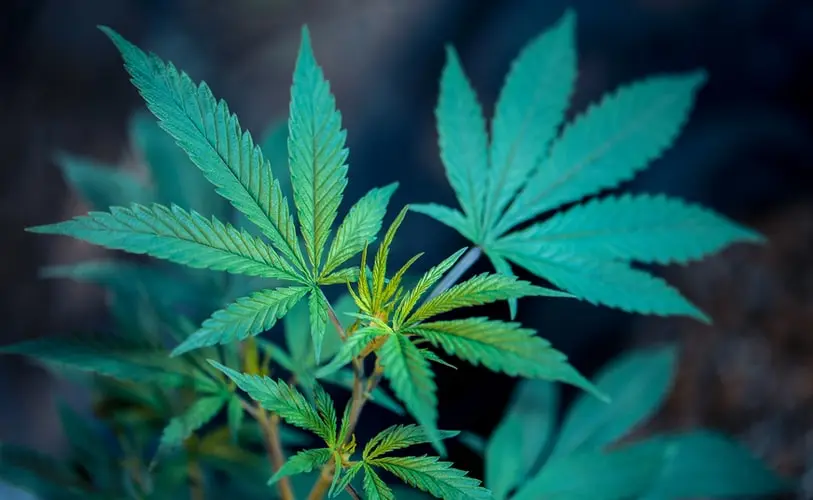Introduction
Cannabis grows in a variety of climates around the world and can be utilized in numerous applications:
- Rope
- Biofuel
- Paper, and
- Numerous therapeutic and recreational uses.
The plant is a portion of the Cannabaceae family, which too incorporates hops. It is further classified as CBD sativa L. Each portion of the plant serves a reason and whereas the total of a cannabis plant is certainly more prominent than the whole of its parts, knowing its parts can inform your encounter and appreciation of it.
Parts of Cannabis Plant
- Flower
The flowers of the female cannabis plant can be distinguished by their little tear structures, which comprise of pistils joined to bracts. CBD blooms are usually secured with a frosty-looking coating of trichomes, with a heavier thickness of trichomes making for a more alluring flower.
- Cola
The primary portion of the bloom, at the end of a female plant’s stem, is composed of numerous little botanical clusters. In common, the greater, heavier, and more thickly covered in trichomes a cola is, the better quality it’ll be, in spite of the fact that a few cultivars will actually grow blooms that are more freely structured and breezy.
- Bracts
The little leaves encompass the regenerative cells of a female weed plant. When a female plant is exposed to dust from a male pot plant, the bracts encompass and shield the seed pod.
- Trichomes
Marijuana trichomes are hair like members found on the surface of the cannabis plant. Trichomes secure the plant from outside stressors and contain resinous organs that make flavonoids, cannabinoids, and terpenes — the chemical compounds that donate the cannabis plant its special highlights and impacts. Trichomes allow cannabis buds a crystal-like luster and make them sticky feeling. Within the glandular trichomes, there are three fundamental sorts: bulbous, capitate-sessile, and capitate-stalked. Non-glandular trichomes are called cystoliths. Bulbous trichomes are little bulbs that are inadequately found all through the complete plant but are so little they can’t be seen with the bare eye. Capitate-sessile trichomes are more plenteous than bulbous trichomes, found on the underside of the sugar leaves and fan leaves, but are only obvious through a magnifying instrument. Capitate-stalked trichomes are formed like mushrooms and contain a huge trichome head at the top of the stalk. These are the trichomes that can be effectively seen on the CBD blossom surface.
- Node
The point at which the stem and leaf meet. Nodes can hold one or more leaves or offshoots. Hubs are imperative to be recognizable, as they are where CBD plants begin to develop either dust sacs (male cannabis plants) or pistils (female cannabis plants). Understanding the sex of a cannabis plant is pivotal to the ultimate item since only female plants create blooms and since non-pollinated blossoms are distant predominant than pollinated buds when it comes to consumption.
- Fan leaves
Leaves are imperative components of a weed plant, and there are really some sorts of CBD leaves. The huge, projecting leaves that show up along the length of the plant are called fan leaves. These leaves are basic to the living plant’s photosynthesis but are continuously expelled from the wrapped up, harvested item.
Types of Plants
- Indica
Leaning weed plants tend to create thick, fat, heavy buds amid the blossoming stage. These strains are regularly accepted to allow consumers a “body high” rather than a more cerebral high.
- Sativa
Sativa plants tend to create buds that are breezy and more shaped than Indica plants. Sativa strains of the weed plant are frequently said to offer users more cerebral, lively, “buzzy” highs.
- Hybrid
As a mix of Sativa and Indica, crossover strains are generally accepted to grant you a more balanced high.
- Hemp
Hemp plants are a portion of the CBD family, but they vary from a normal weed plant in that they produce only follow sums of THC, the cannabinoid capable of the inebriating impacts of the pot plant. In the U.S., the 2018 Farm Bill indicated hemp as a cannabis plant containing up to 0.3% THC. However, hemp plants produce a number of other important cannabinoids, most eminently cannabidiol (CBD), and their filaments are utilized to produce a range of materials.
How to Propagate Cannabis Plant
Knowing the parts of a pot plant is fundamental for proliferating cannabis plants. Propagation refers to the method of using one plant to form new plants. In common, CBD growers do this in one of two ways:
- Cloning
Cloning is a well-known strategy because it permits you to urge numerous infant plants from a single grown-up plant, without having to purchase seeds or go through the long preparation of sprouting, planting, and developing a weed plant from seed. To clone a cannabis plant, carefully cut a branch away from the stem right at the hub. From there, place the cutting into a developing medium, regularly either suspended in water or embedded into a starter plug. When the cutting develops roots you can then transplant it into a bigger holder or the ground, depending on where you’re progressing to grow the plant.
- Seed
Growing from seed requires you to begin from scratch, and is ideally suited to producers who are amateurs, cultivators who need to deliver a modern sort or strain than what they’re already developing, and cultivators who do not have a plant they need to reproduce precisely. To develop a weed plant from seed, put a seed in a few sort of starting medium such as Rockwool or peat pellets and keep it wet until it grows. As the sprout creates leaves and roots, it’ll start requiring increasingly light. When a conventional small ball of roots has shaped, transplant the child pot plant to a bigger holder or the ground and continue to bolster, water, and ventilate it until the weed plant comes to maturity.


Pingback: Cannabis Tech Revolution: Precision Cultivation